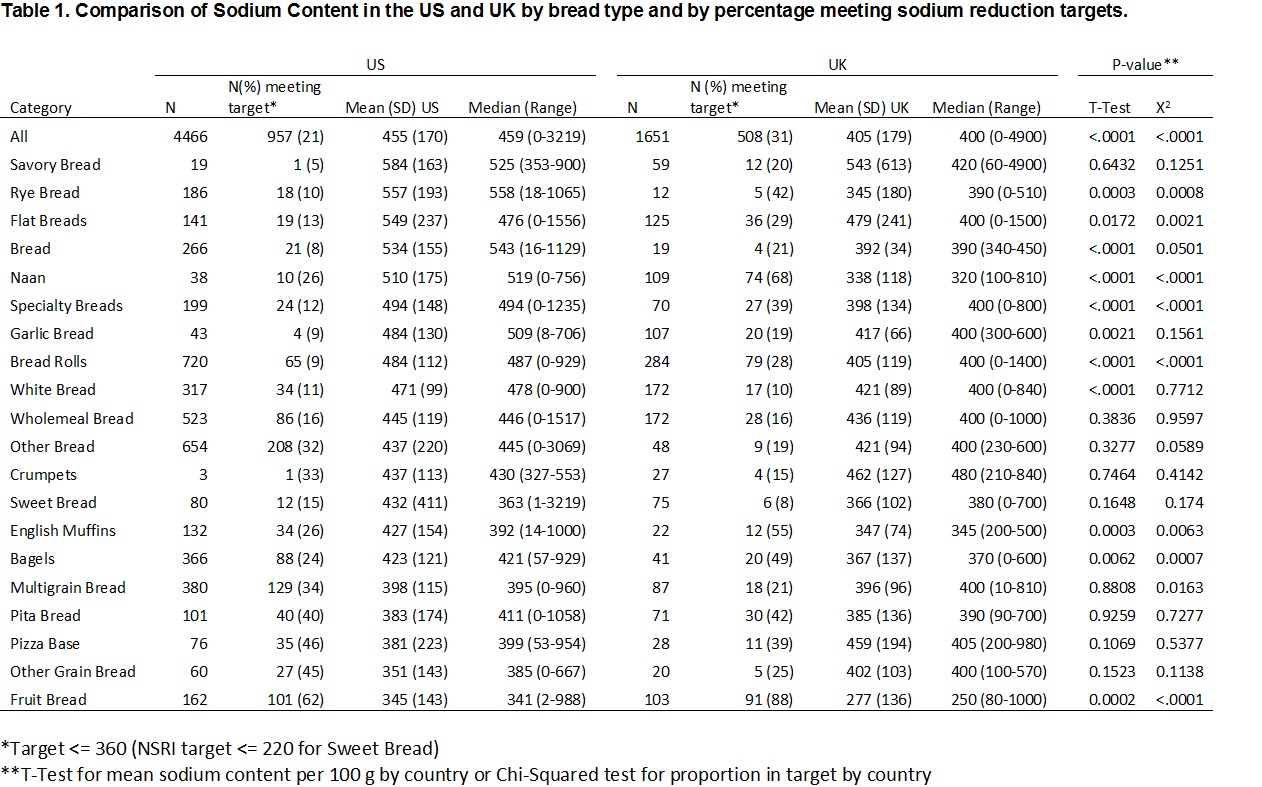Presenting Author:
Kasey Coyne, B.A.
Principal Investigator:
Mark Huffman, M.D.
Department:
Preventive Medicine
Keywords:
sodium reduction, food industry, food policy, cardiovascular health, bread
Location:
Third Floor, Feinberg Pavilion, Northwestern Memorial Hospital
PH46 - Public Health & Social Sciences
Sodium content in US vs. UK breads: Implications for policy
Background: The US population consumes sodium in excess of daily recommended intake. The majority of sodium derives from packaged foods, with bread a major contributor. In the UK, national sodium reduction strategies contributed to a reduction in sodium content in packaged foods and subsequently in population sodium intake. Similar initiatives are emerging in the US, and require surveillance of the food supply to assess effectiveness. Objective: To evaluate the sodium content of bread products in the US and to compare levels to bread products in the UK. Design: Sodium data for bread products were obtained from the US Label Insight Open Data Initiative (n=4,466) and the UK FoodSwitch database (n=1,651). Mean, median, and range of sodium content, and proportion of products meeting US sodium targets established by the National Salt Reduction Initiative (NSRI) and the UK Food Standards Agency (FSA) were calculated overall, by bread type, and by country. Results: In the US, mean sodium content (SD) in bread was 455mg/100g (170) and in the UK was 406 mg/100 g (179). In both countries, savory bread was the bread type with the highest mean sodium level (584mg/100g in the US and 543mg/100g in the UK), and fruit bread was the bread type with the lowest mean sodium level (345mg/100g in the US and 277mg/100g in the UK). Overall, sodium content of US bread products was 12% higher than the UK. Only 21% of US bread products 31% of UK bread products met the NSRI and FSA target. Conclusions: There remains room for significant improvement in the sodium content of bread products in the US packaged food supply. Variation in sodium content across product categories, and between countries suggests the feasibility of manufacturing products with lower sodium. Effective population-level initiatives to reduce sodium have the potential to substantially improve population health, and require robust surveillance of the packaged food supply.

